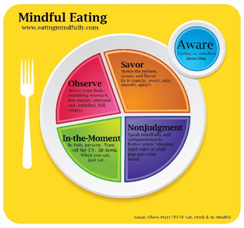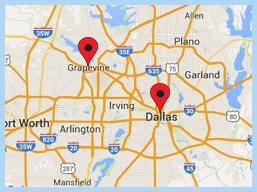What is Mindful Eating??
Our October monthly challenge is mindful eating!! Let’s regain our ability to enjoy the food we eat. Join me on this month’s journey to consciously enjoy each meal, to eat when you are hungry and stop when you start feeling full.
In the course of a day, food enters someone’s mouth approximately 200 times as a bite, taste, or sip and those calories sure do add up. Each time we eat, we are ingesting information that is delivered to each individual cell, some of these may be healthful messages, and some not so healthful messages. Mindful eating may start with asking yourself, “Should I be eating right now? Am I physically hungry, emotional, or just bored?”
The holiday “season” is almost among us and therefore we should start preparing mentally and physically. During the holiday season (Halloween, Thanksgiving, and Christmas) we generally graze on appetizers, candies, desserts, and over consume meals. To prepare in advance, we should get into the practice of eating intentionally and start to develop mindful eating habits.
Why do you eat?

Are you an emotional eater? Do you eat to try and fill a void of anger, sadness, boredom, loneliness, or because of stress? Are you just eating out of enjoyment, even when you are not physically hungry? Do you crave certain foods because of taste or a reward system? Are you eating because of physical hunger? Do you eat to live? Do you eat for the sole purpose of fuel and energy?
When do you eat?
Do you wait to eat until you are at the office and working in front of a computer? Do you eat in the car when you are stuck in traffic? Do you wait to the last minute and eat when you are ravenous and then feel miserably full after? Do you eat when you are not hungry but because it is 12:00 and feel like you need to?
How do you eat?
Do you eat sitting down at a table with your food on your plate, or do you stand with a bag of chips? Do you prepare your meals in advance and cook at home or do you rely on fast food? Do you eat of a takeout box or do you portion your food on a smaller plate and save the leftovers for later?
There are some steps I would like you to consider when embarking on this mindful eating journey:
- Plan for 3 meals each day at somewhat regular times. You need three meals during the day to nourish yourself, provide energy through the morning and afternoon, and prevent overeating later on in the day. If you are working out regularly you need these nutrients to refuel your body and build lean muscle. You should not skip meals or snacks due to busyness during the day. Plan a lunch time and 1-2 snack times during your day to prevent mindless eating at your desk or in the breakroom. You and your family should create an “eating-only” zone both inside the home and outside the home, example is the workplace. These places should be areas where there are no computers, televisions, cell phones, or work/homework present. It is hard to focus on hunger and fullness cues with distractions going on. Some examples of an “eating-only” zone without distractions include: the dining room table, a table in the breakroom (not in your cubicle or office), a bench in the hallway, a chair by the window, etc. If you feel physically hungry and have 30+ minutes until your next scheduled meal, eat a healthy snack. Take 5-10 minutes to sit down and remove yourself from technology to enjoy a snack before you start feeling ravenous. If we carry around healthy snacks and pack our lunch, this will prevent us for reaching for convenience foods or fast food during the day; preparation sets us up for success!
- Evaluate how hungry you are before, during, and after meals. Over time mindless eating leads to a divide between food and our body’s natural, physical hunger and fullness cues. Stop and ask yourself where you are on the “hunger scale” before and after meals. The scale ranges from 1-10 with 1 being ravenous and 10 being overfull. Try and stop during your meal at a 6-7 when you are starting to feel full and satisfied, but not overly full.
- Try eating with smaller utensils to allow yourself to take smaller bites. Set your utensils down between bites allowing yourself to chew the food more before swallowing. Use smaller plates to prevent overserving yourself. Wait 10-20 minutes after your last bite before going back up for seconds to evaluate whether you are feeling physical hunger or just want the taste of another food. Society is used to 5-10 minute meals, but in reality we need to slow down and enjoy our meal. Each meal should last 20-30 minutes allowing us to sip on a beverage and breathe between bites. Take time to notice the appearance, aroma, taste, and temperature of your food.
- If you do not feel physically hungry, try and avoid eating out of emotion or boredom. Do something to manage your stress or take care of yourself in a way that doesn’t involve food. Go for a walk or engage in exercise, read a book on the couch with a cup of hot tea, or call up a friend and explain the emotions you are feeling and talk through them. When planning social situations try and opt for an activity that doesn’t involve food like going to the movies, going to a museum, golfing, playing a social sport, or kayaking.
- Deal with food cravings in a “smart” manner. When you are craving a certain food just for the taste, take a 20-30 minutes to really evaluate why you want that food and whether you really need it before giving in. If you struggle with this consider using the app “I Deserve a Donut” that helps you process through these cravings and emotional eating. If you are still thinking about that food in the 30 minutes, allow yourself to have that treat but stop when you are at a 5-6 on the satisfied/hunger scale. It helps to put that snack or dessert on a plate and sit down to eat it; enjoy your craving. We are not depriving ourselves but mindfully allowing ourselves to have certain foods out of choice, not habit or compulsive decision making.
During the past 20 years, studies have found that mindful eating can help you to reduce overeating and binge eating[1], lose weight and reduce your body mass index (BMI)[2], cope with chronic eating problems such as anorexia and bulimia, and reduce anxious thoughts about food and your body[3], and improve the symptoms of Type 2 diabetes.[4] Additional benefits include: actually tasting what’s in your mouth by slowing down to chew thoroughly before swallowing, easier digestion, lowered consumption and a better relationship with food in general.
Please visit our blog titled Mindless Eating Questionnaire to assess why you eat, when you eat, and how you eat. Ideally we would like you to take this questionnaire at the beginning of the month and again at the end of the month to track your progress.
[1] Kristeller J. L. and R. Q. Wolever. 2011. “Mindfulness-Based Eating Awareness Training for Treating Binge Eating Disorder: The Conceptual Foundation.” Eating Disorders. 19(1): 49-61.
[2] Tapper, K., C. Shaw, J. Ilsley, A. J. Hill, F. W. Bond, and L. Moore. 2009. “Exploratory Randomized Controlled Trial of a Mindfulness-Based Weight Loss Intervention for Women.” Appetite. 52(2): 396-404.
[3] Rawal, A., J. Enayati, M. Williams, and R. Park. 2009. “A Mindful Approach to Eating Disorders.” Healthcare Counseling & Psychotherapy Journal. 9(4): 16-20.
[4] Faude-Lang V., M. Hartmann, E. M. Schmidt, P. Humpert , P. Nawroth, and W. Herzog. 2010. “Acceptance- and Mindfulness-Based Group Intervention in Advanced Type 2 Diabetes Patients: Therapeutic Concept and Practical Experiences.” Psychotherapy and Psychosomatics in Medical Psychology. 60(5): 185-9.
Dallas
3800 San Jacinto
Dallas, TX 75204
(214) 827-8777
Driving DirectionsHours:
Monday, Wednesday,
Friday: 8:00 a.m. - 11:00 a.m.
Tuesday: 4:00 p.m. - 7:00 p.m.Grapevine
823 Ira E. Woods Avenue
Grapevine, TX 76051
(214) 827-8777
Driving DirectionsHours:
Thursday: 1:30 p.m. - 5:00 p.m.






